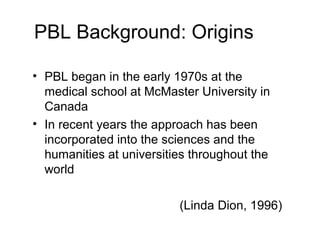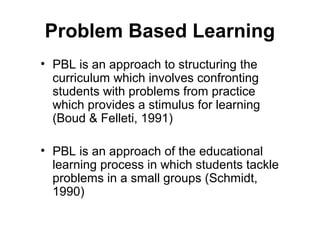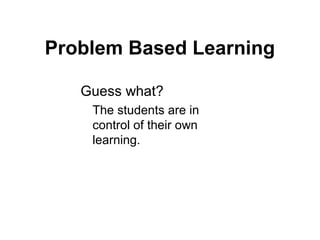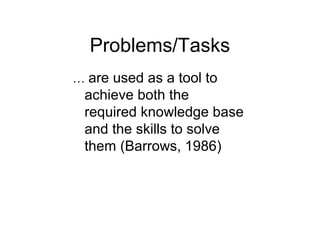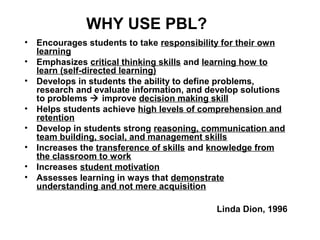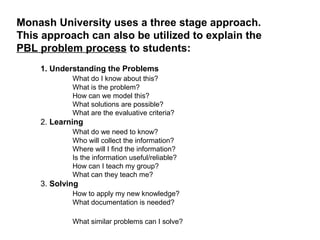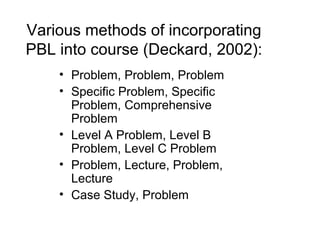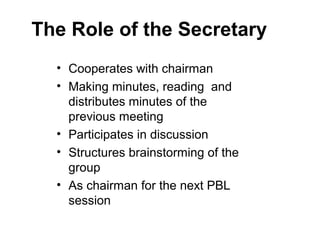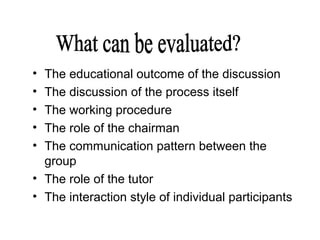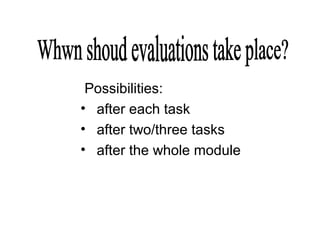This document provides an overview of problem-based learning (PBL). It discusses that PBL is an active learning approach where students work in small groups to solve real-world problems. It contrasts PBL with the traditional lecture approach. The roles of tutors, students, chairs, and secretaries in the PBL process are described. Steps in the PBL process like understanding the problem, learning new information, and applying the solution are outlined. Evaluation of the PBL process is also discussed.





